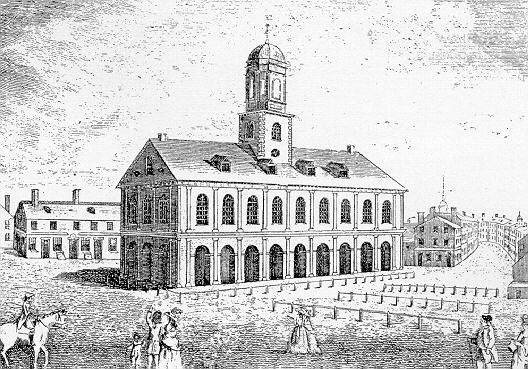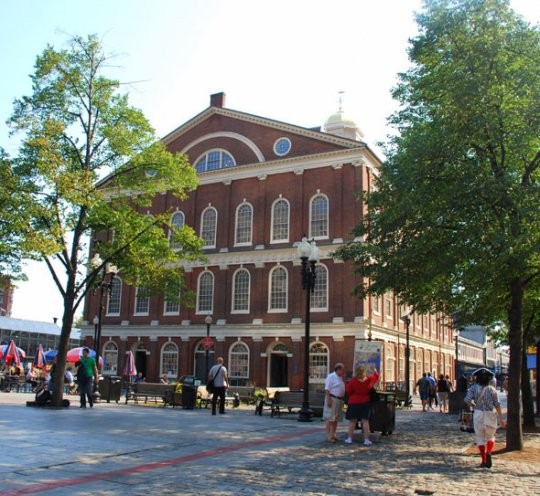Faneuil Hall
Introduction
Text-to-speech Audio
Images
Faneuil Hall as it looked in 1742

Today, it is a leading tourist spot and home to shopping and social venues. The meeting hall has been preserved and open for interpretive tours.

Backstory and Context
Text-to-speech Audio
In 1740, a Boston merchant Peter Faneuil offered the city council a donation of a substantial building for a market house that would be a gift to the people of Boston. While there was some opposition to building a market house, Faneuil's notion was accepted by the majority of seven councilmen. In 1764, Faneuil Hall was the scene of the most significant protest against British rule to that time when citizens protested the Stamp Act and the Sugar Act. The building was home to public meetings of all sorts, and as a result, many of the meetings and protests against British rule in the next decade also occurred here. Many supporters of independence gave speeches at Faneuil Hall, including Samuel Adams. Today, a statue of Adams that stands at the entrance to Faneuil Hall.
While most of history focuses on Faneuil Hall as the meeting place of the Revolution, the building's main purpose was to support economic development. Details of the building's construction demonstrate its connection to trade, including the grasshopper weather vane as the insect was a symbol of commerce at this time. Originally, the first floor of Faneuil Hall served as a market and the second floor served as the government hall. The top floor served as an armory for the town's protection. In 1806, the hall expanded to hold offices and a large assembly room on the top floor.
Faneuil Hall was renovated in 1806 and 1989. In 1960, Faneuil Hall was registered as a National Historic Landmark and was restored in 1992. Today it still operates as a marketplace as part of a much bigger complex known as the Faneuil Hall Marketplace, which includes three long granite buildings: North Market, Quincy Market, and South Market. The complex itself is an indoor/outdoor mall and a food eatery. Here one can shop, get a bite to eat and even get a feel of what life was like in Boston during the 18th Century.
Sources
Faneuil Hall. National Park Service. Accessed June 22, 2017. http://www.nps.gov/bost/historyculture/fh.htm.
Faneuil Hall, National Park Service. Accessed March 31st 2020. https://www.nps.gov/bost/learn/historyculture/fh.htm.
Faneuil Hall, The Freedom Trail. Accessed March 31st 2020. https://www.thefreedomtrail.org/trail-sites/faneuil-hall.
